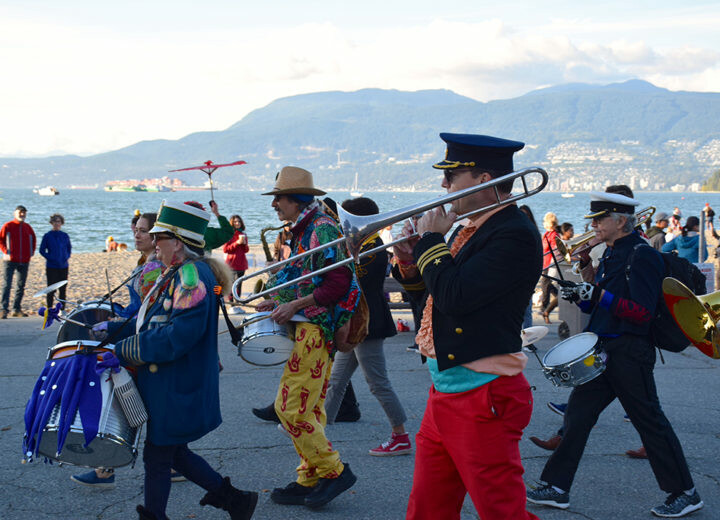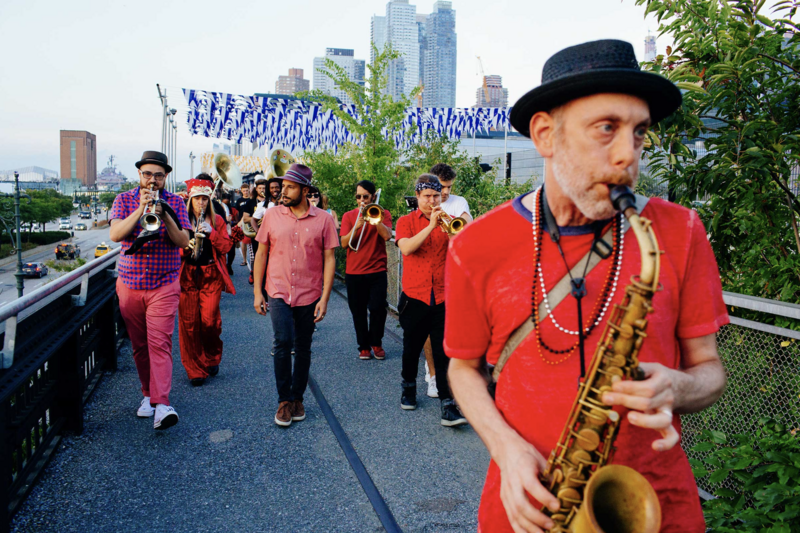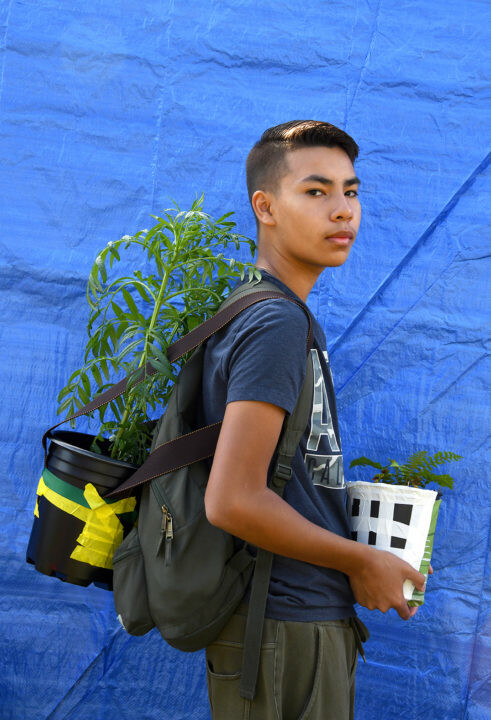- Info
How to Read the Reader
- May 28, 2025
Learning Otherwise: Embodiment, Language, and Crip Temporalities in RA Walden’s Practice
- Feb 14, 2025
The Agency of Walking
- Jan 21, 2025
Groundwater
- Jun 25, 2024
QUIET PARADE: Precedent Projects
- Jun 18, 2024
Unearthing Stories: Tracy Qiu on Decolonizing Plant Narratives
- May 27, 2024
Resources and Research: Overseeding
- Mar 28, 2024
The Blackwood Index on Campus
- Feb 26, 2024
Building Interrelationships through Interpretive Text
- Feb 07, 2024
Listening is Our Ongoing Score
- Dec 06, 2023
To resist, to empower, to heal
- Nov 20, 2023
Queer Orientations for Future Worldmaking
- Nov 02, 2023
“The sex ed we have as teenagers is precarious”: A timely conversation between Lorena Wolffer and Kira Sosa Wolffer
- Oct 27, 2023
Readings and Resources on Palestine
- Oct 20, 2023
Difficult Art
- Jul 13, 2023
Gestures Toward the Miraculous: A Q&A with Erika DeFreitas
- Jul 06, 2023
“A toast! to you”: Create Your Own Meal of Choices
- May 30, 2023
Sense Encounters
- May 16, 2023
What brings you here? SDUK Readership Survey
- May 05, 2023
Here, Better, Now: Connections
- Apr 06, 2023
Here, Better, Now: Foundations
- More…

“[The] performative dimension of celebration has inspired many artists who have invested such public contexts as city streets to create something that would be part of everyday reality and that would generate new relationships based on collective, grass-roots participation."1
As we continue to prepare for QUIET PARADE throughout this summer, we’re looking to precedent projects which share affinities with the project’s conceptual and material concerns. Below is a bibliography of sorts, chronicling artist-led parades and events that offer creative use of public spaces, engage expansive ideas of accessibility, and experiment with collectivity.
Like QUIET PARADE, many of these artworks experiment with celebration—albeit often to non-normative or ambivalent ends. In these contexts, celebration isn’t framed as a force to create or maintain unity; rather, it is a feeling that can offer productive conditions to highlight difference and marginalized ways of being. As art critic Marie Fraser writes, in critically-engaged art practices, “Celebration is a locus of exchange and a factor of cohesion that avoids social normalization and hierarchy.”2 Read on for artworks that speculate on accessibility, public gathering, and celebration.
Carmen Papalia, Mobility Device

In Mobility Device, Carmen Papalia navigates city streets accompanied by a marching band. As a replacement for his cane, the musicians offer sonic cues which help Papalia navigate his surroundings. Mobility Device engages the non-visual elements of city space: by developing a score for navigation, Papalia and his collaborators propose an alternative language of mobility.
Lucia Monge, Plantón Móvil

“Plantón” is the word in Spanish for a sapling, a young tree that is ready to be planted into the ground. It is also the word for a sit-in.”3 Lucia Monge’s Plantón Móvil adopts both meanings of plantón, taking shape as a public procession where participants carry plants through city streets, culminating in a planting event. Monge frames the project as a “walk” for plants, remarking that despite our anthropocentric conceptions of cities, the streets are also theirs. The project serves as a protest for plants who are subject to city pollution without their consent. She writes: “I wondered what it would be like to encounter a walking forest that had taken to the streets like any other group of people would do, demanding respect.”4

Raquel Meseguer Zafe, A Crash Course in Cloudspotting
“I’ve lived with chronic pain for over a decade which means I need to lie down a lot. My way out of my own personal lockdown was to begin to lie down in public. I lay down on trains so that I could go visit my family. I lay down in galleries and theatres so I could have art in my life again. Simple ordinary things we should all get to do.”5
A Crash Course in Cloudspotting is an archive that compiles the rest practices of people with chronic illness or other invisible disabilities. Artist Raquel Meseguer Zafe writes: “At first I thought I might belong to a small group of people who need to rest throughout the day to manage the pain and fatigue associated with invisible disability, disability or neurodiversity. Turns out it’s a pretty big group.”6 Archive contributors share their experiences of seeking rest in public—be they affirming or adverse. Browsing the archive, readers can witness the range of responses that occur when individuals use public space in non-normative ways.
Kat Germain, Visual Translation and the Amazing Broken Telephone Kaleidoscope
Kat Germain provides accessibility services in diverse and responsive ways (including during QUIET PARADE, where she will provide live visual translation, also known as audio description). In Visual Translation and the Amazing Broken Telephone Kaleidoscope, she considers the complexity of translating artwork across modes of communication. Offered as an experiment during the Blackwood’s 2020–21 virtual conference Running with Concepts: The Mediatic Edition, Germain provided visual translation of a signed music video by Jody Herbert Cripps which included musical elements and sound design. In the ensuing public conversation, Jess Watkin commented on her reception of the translation as a Blind audience member. With Broken Telephone as one example, Germain continues to maintain a responsive visual translation practice, which asks: What is the dichotomy between a Deaf artist’s (silent) work and a Blind audience member’s experience of it? If the audible translation (which is necessarily a creative act) is the only experience an audience member receives, at what point does VT cease being a copy, and when does translation create it anew?
the vacuum cleaner, The Balmy Army

“I’m starting a long term project called Balmy Army. It’s part art, part activism and part mutual care project. I want to help you fight for what should be a basic right … good mental health care. I want to do this because I know how much bad mental health care affected me.”7
Artist the vacuum cleaner (James Leadbitter) has a longstanding interest in improving youth mental health, rooted in his own experiences growing up in the UK system. His Balmy Army is a multifaceted project, first presented at Manchester International Festival, which included an Action Lab for youth, public events, and a march through the city. Throughout the project, youth shared their thoughts, made art, poetry, and podcasts, and claimed space for mental health in Manchester. The Balmy Army included over 40 youth participants, and sessions for parents, carers, and NHS staff.
Christopher Willes, Quiet Concerts
“In [Robin] Dann’s concert she combined whispering, singing with electronic keyboard accompaniment, performing on such items as combs, brushes, and a foldout fan, the process of boiling water for the making of tea, and reading a children’s story. I experimented with taking off my headphones at several points to see how audible the acoustic sound was and to my surprise discovered I could barely hear what was happening. With the headphones on however, it was a completely different story — very close-up and intimate.”8
Part of Toronto Public Library’s Artists in the Library residency series, Quiet Concerts was a performance series by Christopher Willes featuring musicians and poets in an intimate concert that was broadcast live onsite, and replayed in wireless headphones. Upturning the notion of libraries as solely quiet spaces, in Willes’ concerts, “audience members were invited to wander the library, read a book, rest, draw or watch the performer up close while the sounds played out in their ears. The series presented an unusual concert experience in a public space, and reflected on how listening and reading together with others can create a deeply embodied experience of quietude.”9
Crip Rave
Led by Toronto-based duo Renée Dumaresque and Stefana Fratila, Crip Rave Collective creates alternative experiences of nightlife rooted in accessibility by hosting parties and workshops, and consulting with nightclubs and event promoters. At their parties, the Collective’s wide-ranging access initiatives include “non-alcoholic hydration station, anti-inflammatory snacks, comfortable and varied seating, a stretching area, easily identifiable party organizers, harm reduction supplies, and an accessible bathroom and venue entrance” for in-person events, and for online raves, “ASL Music Interpretation, sound descriptions, live painting, and tactile bags.”10
By offering multiple means to participate and feel comfortable, Crip Rave Collective responds to Kevin Gotkin’s suggestions and critiques offered in a recent article about nightlife:
“[T]he DJ must also refuse the audism of nightlife spaces. They must resist any simple ideas about how to make music accessible (like the notion that simply transcribing and projecting lyrics is what Deaf clubgoers need or want). Perhaps, instead, the DJ collaborates with a poet who scribes the score live and a choreographer who transmutes the vibrations into a sighted and perhaps haptic experience. Accessible nightlife artistry is, in this way, properly anti-disciplinary. There can’t be a single ideal modality.”11